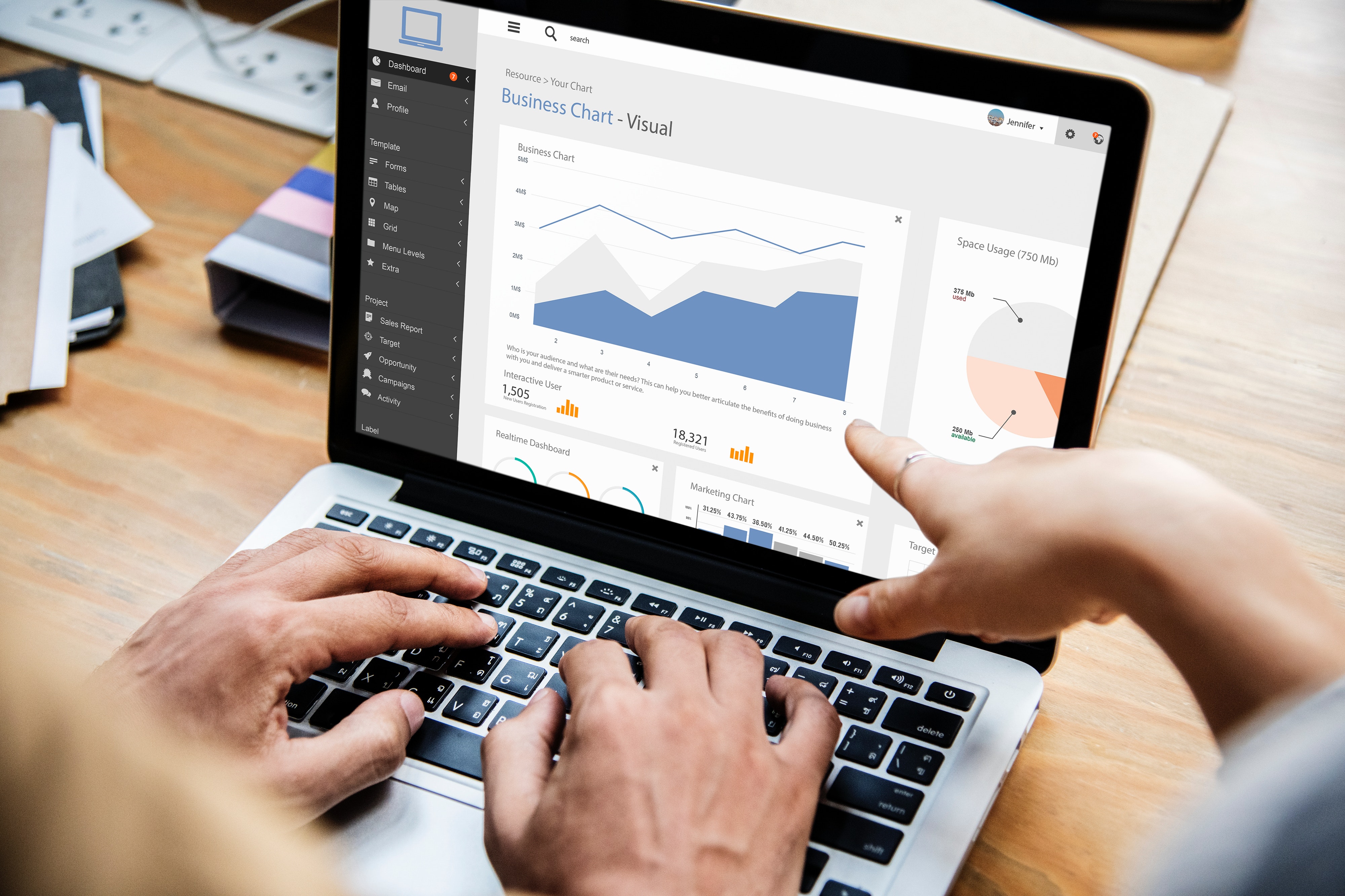1. Why is content so important to your marketing strategy?
Content marketing has been fundamental to the travel industry for its ability to strengthen relationships with potential and existing consumers.
Content marketing has been fundamental to the tourism industry because of its ability to strengthen relationships with potential and existing consumers. For example, consumers rely on the travel company for information related to their travel needs, in relation to dining, entertainment and, of course, accommodation.
Content marketing has been fundamental to the travel industry for its ability to strengthen relationships with potential and existing consumers.
In addition, as a reliable source of information, you can also reinforce your other digital strategies, such as social media management, online reputation, and, especially, conversion strategy. In fact, studies have indicated the value of content in the travel industry for its power to foster customer loyalty, increase engagement and strengthen brand awareness.
In fact, content is a valuable asset for the travel industry.
However, given the current landscape we find ourselves in, it is no longer enough to simply have an interesting, creative idea and write about it. Instead, you must consider what platform your audience is on and make it possible for them to find your content, interact with it and share it. This involves creating cross-platform content, a line of dialogue that, regardless of where it starts, can reach your website and trigger a conversion, i.e. a purchase or booking.
And content is essential because it first begins tobuild credibility, helping to mould the customer’s experience with your brand, as 75% of tourism consumers, who a consistent experience wherever they go (Salesforce, 2018). Furthermore, content marketing is a valuable strategy for engaging and building relationships with a brand’s target audience
As you probably already know, content marketing, in addition to improving your credibility and building relationships with your potential customers, can help you improve your search engine ranking, as indicated by 61% of marketers saying that improving SEO and increasing organic presence is their top inbound marketing priority. (HubSpot, 2018).
In fact, organic SEO is approximately 5.66 times better than paid ads (New Media Campaigns, 2018), although these are still necessary for a tourism business. But the truth is that SEO can help you attract a more niche, targeted audience that is interested in what you want to offer.
And as we said at the beginning, the objective of your content is to attract in order to generate conversions. This is closely linked to its value, that is, to the importance it has for your audience. There is no point in creating and publishing or sending content through a medium that is not interesting to your target audience at a specific point in their buying cycle. There is a place (a channel), a moment (customer journey) and definitely a format (text, image, video or email) that is optimal for each occasion, for each type of conversion.
And that is why, when creating a content marketing strategy, it is important to identify the objectives you want to achieve, how you plan to meet them and what you need to analyse. Certain metrics can help you measure the impact your content has on your marketing strategy, allowing you to track, analyse and optimise its performance on an ongoing basis, as you will gain valuable insights into the suitability of the channel, the content format and the precise moment when the information performs best.
Content marketing is a very important part of a content marketing strategy, but it is also a very important part of a marketing strategy.

2. Introducing metrics into your marketing strategy
Just a few years ago, content marketers were comfortable measuring the success of their content through web visits. However, thanks to technological advances in marketing analytics, it is now possible to measure and analyse just about everything. This means that content creators must not only generate and plan content that creates engagement, but also use content to drive business results, with a strategy that can support the rest of your company’s marketing and sales strategies.
By analysing which posts work and which don’t, marketers can create detailed content strategies, perform real-time optimisation and generate business value for the company. Even so, 67% of marketers highlight content performance measurement as one of the most challenging areas. This is because setting targets for content often doesn’t work beyond the creation and distribution of posts.
{{cta(‘bb2971b9-bf36-4c36-8edc-75223dba5208’)}}
According to a recent study by Curata, 37% of content creators never complete a content analysis which, when done correctly and regularly, can improve your overall content marketing strategy. Furthermore, as mentioned above, analysis can reveal your strengths and weaknesses, and help you tailor your objectives and activities according to the real needs of your business.
With this in mind, how do you do a proper content analysis? We show you the essential metrics that will help you interpret what works and what you need to change in your content. Let’s start with a technical analysis, to rule out that there is nothing wrong with your pages:
2.1. Measuring technical performance
On a technical level, the speed of a website influences its search engine ranking, and also influences the price of the ad in Google Ads according to its Quality Score scoring method. Therefore, regardless of what your main objective is, you should not let great content go to waste by not carrying out a speed test, which also influences the bounce rate, another aspect directly related to page positioning.
To perform this speed test you can use the Google PageSpeed Insights, a free tool that shows you the total load time and offers recommendations to improve the performance of your page for both web and mobile. It is important that you do not fail to involve your technical staff, remember that you are all working to achieve the company’s goals.
GT Metrix is another freemium tool that can help you by creating reports of technical deficiencies that can slow down your site. Others are Pingdom with an alert system, or Dareboost with recommendations to improve performance and audits on SEO, accessibility and security.
GT Metrix is another freemium tool that can help you by creating reports on technical deficiencies that may slow down your site.
2.2. Measuring behaviour
Yet you should know that the analysis of the performance of your pages through Google Analytics (also Search Console) is not a classic because of its age, but especially because of its effectiveness. With these free key tools from Google you can see how the behaviour of users on your pages through:
- Page views: is the indicator that reveals how many people visit a page on your website. Page views can give you a basic understanding of how good your content has been, as well as showing you the types of topics that attract the most attention from your audience. It is one of the key metrics to take from a website content audit, allowing you to reflect on your strategy intelligently moving forward. In this regard take into account the importance of the Theme Clusters to position your pages.
- New and repeat visitors ratio: shows the ratio between new and returning visitors. The number of new visitors can indicate the number of potential customers, while the number of returning visitors shows whether visitors like your content. It’s best to have a healthy mix of both so that your content can attract new customers and retain existing ones.
- Page depth: this shows the average number of pages users visit per session on your website and can help you assess whether your content is entertaining and generates engagement. For example, if this number is too low, it may be an indication of poor quality content or that the design of your website is causing difficulties for navigation.
- Traffic sources: shows which sources bring traffic to your website. By analysing traffic sources, it is possible to identify which channels and strategies work best for your content distribution. It can also identify the channels with the most potential, so that you can dedicate a greater proportion of your resources to them or consider adjusting your strategy.
2.3. Measuring engagement:
On your pages.
- Bounce rate: indicates that, in a session, the user has visited a page but has not interacted with it or accessed another page. Although there are several factors that influence this bounce rate, such as the design of the page, the suitability of the information according to the search term used, or even the loading speed (as we have mentioned), it is important to take it into account when assessing those pages with a very high bounce rate and no conversion. But in addition to this metric, you must take into account…
- Dwell time. It is possible to find pages with a relatively high bounce and a surprisingly high dwell time, which is directly related to the engagement of the page. This may indicate that the content is interesting, but perhaps there are no conversion elements available to the user and, if there are, perhaps they are not working and a change needs to be considered. In short, the average time spent on a page tells you whether visitors are reading your content attentively or just taking a quick glance. If the time spent on one piece of content is significantly higher or lower than others, it can suggest what type of content users like best and use this as a basis for creating relevant content in the future.
On your social media networks:
- ‘Likes’ and shared posts: these are basically indicators of the engagement and popularity of your content among your social media audience. In this case, keep in mind that the action of sharing posts is more important than a ‘like’, as it not only shows that someone has found your content interesting, but also that it has enabled the expansion of their online reach among their network of friends or followers. Therefore, when it comes to generating content on networks, the idea is to promote the latter feature.
- Comments: the number of comments on your posts shows the level of engagement with the content, as it means that a reader was motivated enough to take the time to express their opinion. Comments, i.e. user-generated content, are a powerful tool when it comes to improving online reputation. But they can also be a double-edged sword if not properly monitored and analysed. The idea is to improve the user experience with your brand and prevent possible problems or crises that could affect your brand image.
2.4. Measuring SEO results:
In addition to Google Analytics, you can also use Google Analytics to measure the results of your SEO.
In addition to Google Analytics and Search Console, many companies use other SEO analysis services, especially to assess the performance of content, such as Sistrix, SEMRush and other tools that can help you to understand:
- Organic traffic: this shows the number of people who have found your website through a search engine; if the figures are low, it is a clear indicator that an article or page has not been sufficiently optimised. If one of your content goals is to increase organic traffic, you need to optimise your pages for SEO, perform a site audit and implement Theme Clustering.
- Positioned keywords: you can check the performance of your publication by using specific keywords. For example, how many keywords is your article ranking for compared to your competitors, how relevant are these keywords, what is the positioning of your pages with respect to the selected keyword in the Google SERPs, etc.
- Number of backlinks pointing to your web pages. Quality backlinks are mentions on other pages to your website that influence your ranking, as long as they come from other domains with authority and relevance, and that improve referral traffic. You should check that there are no harmful pages pointing to pages on your website that could affect your SEO results.
2.5. Measuring conversion
- Conversion rate of your content, regardless of the channel used to deliver it, is critical. you must measure the percentage of visitors who clicked on a call to action from your pages, but also from your emails and social media posts. Each conversion should be measured in terms of the action to be taken, i.e. how the user was expected to interact with the content.
- Number of leads: this is the number of potential customers who have shared their personal data through the content you have created. You can obtain them through contact forms, sign-ups for updates and newsletters, downloads of offers, etc. These leads become part of your database (CRM) which can also give you information on what content is most interesting as they qualify as ‘sales-qualified leads’, i.e. potential buyers.

3. Analysis through the customer journey
According to Salesforce, a customer needs between 6 and 8 touch points before making a purchase. So when you’re measuring the performance of your content, why not take into account the value of the information you provide to your customers at each stage of their buying cycle, i.e. their customer journey?
When you’re measuring the performance of your content, why not take into account the value of the information you provide to your customers at each stage of their buying cycle, i.e. their customer journey?
A content marketing strategy should be designed to provide all the information necessary for a potential customer to move through the funnel or conversion funnel. This is proven by various studies, as only around 22% of businesses are satisfied with their conversion rates (Econsultancy, 2018).
An alternative way to measure performance is to consider funnels. In a funnel model, you create content that engages the user and builds brand awareness, converts them into a qualified user and facilitates business conversion of this qualified lead. If you do not take the customer journey into account when performing the analysis, you will fail to see the big picture needed to optimise and improve your results.
When you keep this conversion funnel in mind to analyse the performance of your content, you should not forget that, in addition to your new customers, you also have customers in your database who may repeat this cycle, i.e. who may make a repeat purchase or booking.
3.1. Top of funnel (TOFU)
Also known as the awareness stage ordiscovery, the content created here is designed to give visitors feedback on their problems and the solutions that exist. If this is successfully achieved, then the visitor will become a lead.
The lead.
The parameters included are:
Parameters that are included are:
- Traffic generated
- Bounce rate
- Conversion rate
- Time on page
- Time on page
- Brand awareness
- Time on page
- Engagement
3.2. Middle of the funnel (MOFU)
Also known as the consideration stage, here the user has a specific set of questions that provides answers through problem-specific content that will increase your conversion rate. The goal of most types of websites and businesses is to acquire potential customers who are aware of the product or service, even if they are not ready to make a purchase. Therefore, the performance metric to track is the number of qualified leads, so the content with the highest number of qualified leads is ranked the highest.
The number of qualified leads is the most important metric to track.
The metrics that are included are:
- Traffic generated
- Conversion rate of offer, banners, promotions
- Opening rate of emails and click-through rate
3.3. Bottom of funnel (BOFU)
The final step in the customer journey is to find out what content your leads need to make the decision to buy. The goal here is to convert qualified leads into end customers and, if the content you create can facilitate this, then it has a full funnel phase. The performance metric to track here is the number of final conversions generated by the content.
Metrics to measure this include:
- Number of sales per qualified leads
- Offer conversion rate
- Promotional email open and click-through rate
- Opening of promotional emails and click-through rate
When you understand the key metrics on which your content strategy runs in the customer journey, you will have a clear view of how you can optimise and improve your content strategy. Remember that data is essential today to continue to grow and it is useless if you don’t analyse and evaluate it.


